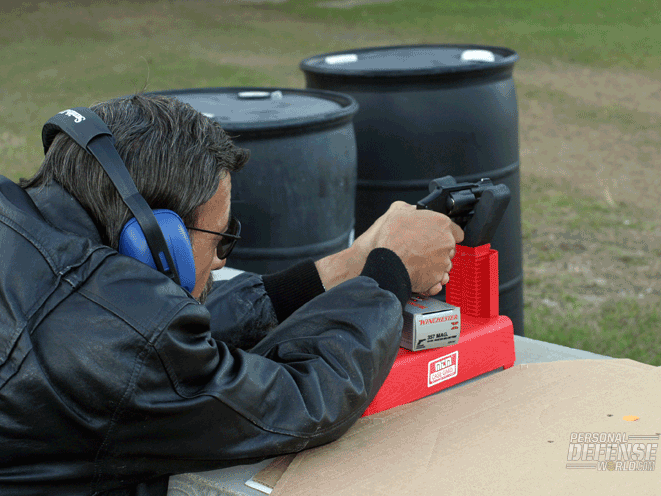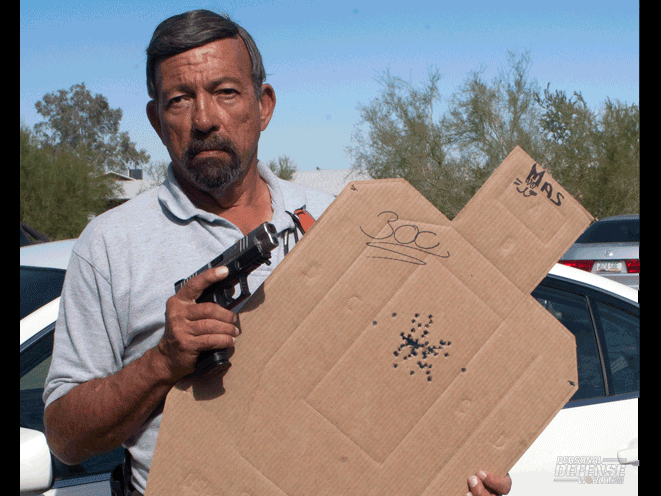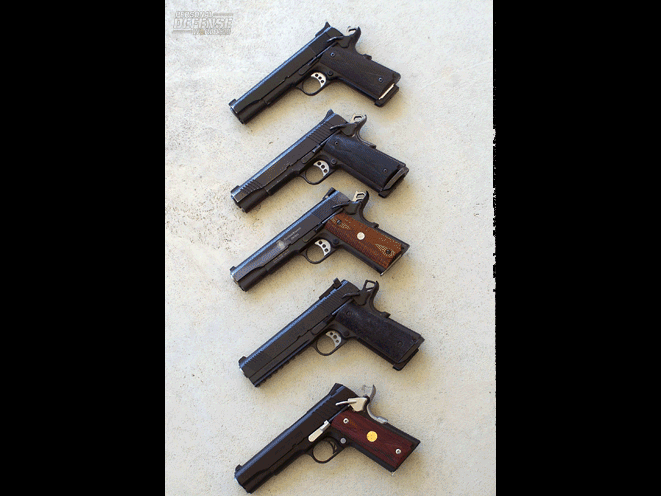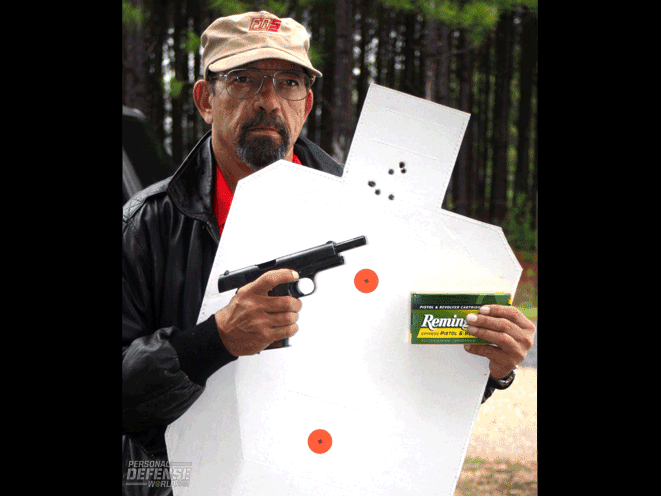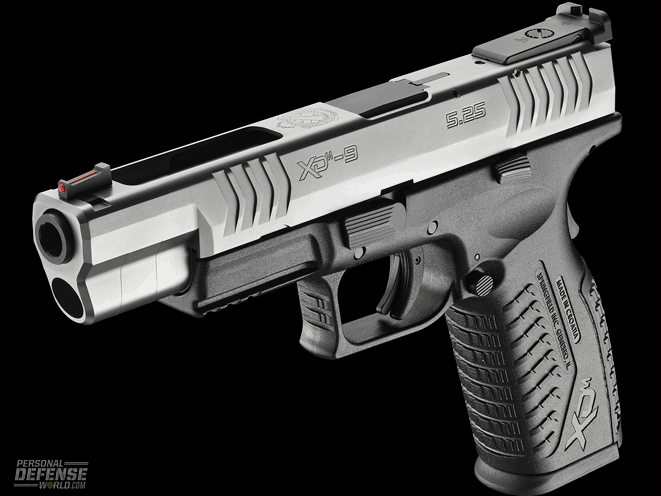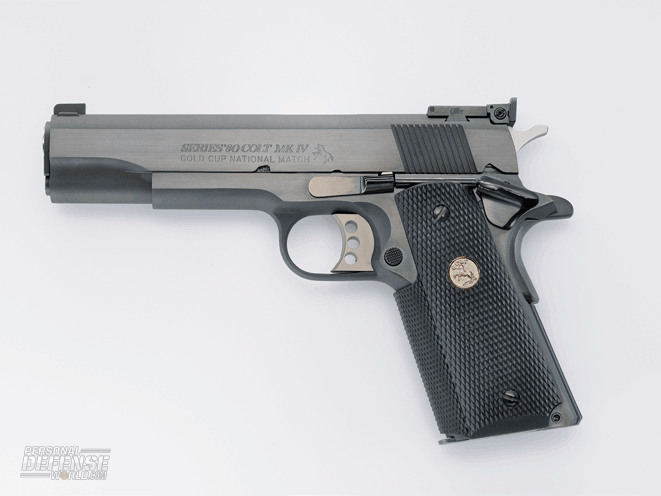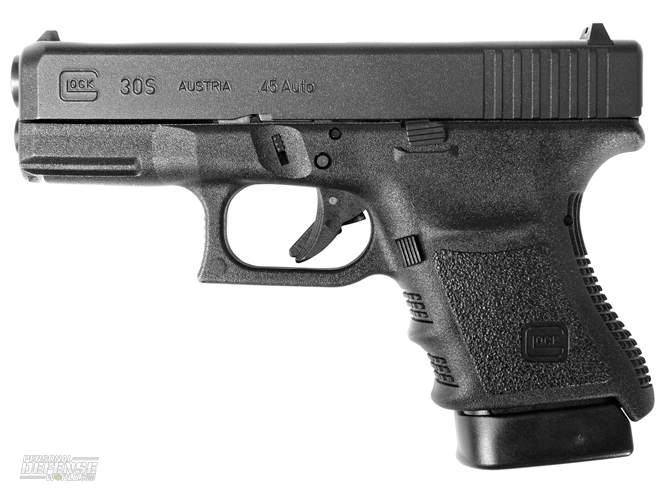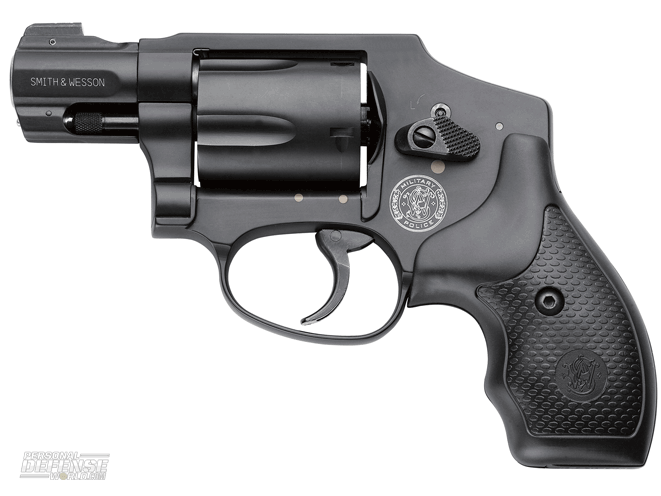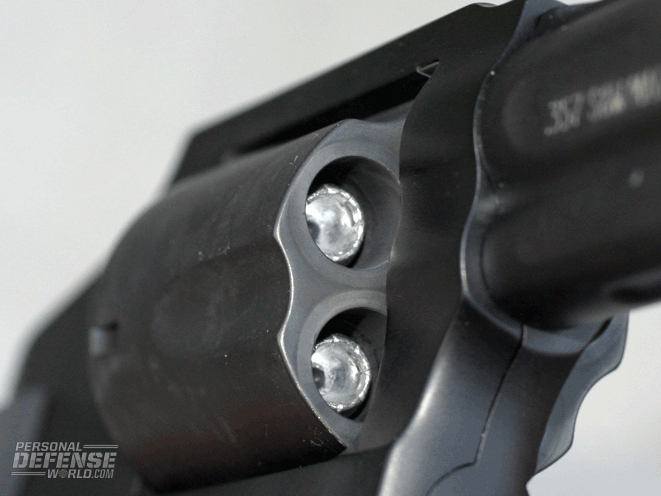For more than two decades now, I’ve been writing COMPLETE BOOK OF HANDGUNS. In many editions, there was a banner line across the bottom of the cover titled “Ayoob’s Favorite Handguns.” Every year, those were different handguns, which led to some confusion. The fact was, those were the favorite handguns of the current crop for that year, which I was testing for the magazine.
What makes a personal long-time favorite handgun not just the cream of the crop for a given year? It might be sentiment. It might be that it has always worked for you and become a trusted companion. It might be that it simply has the attributes you’ve determined best fit your particular needs. Or it might be a combination of those, or something else entirely.
I own a lot of handguns that fit the “backup gun” role—the small, last-ditch pistol you reach for when all else fails. I’ve even had occasion to carry a second full-size handgun, and one strange situation where for about a week I carried four Glocks.
Advertisement — Continue Reading Below

For some time now, though, my primary backup gun has been a Smith & Wesson M&P340 revolver, chambered for .357 Mag but normally loaded with Speer 135-grain .38 Special Gold Dot +P hollow points. When that gun came out eight or so years ago and I had the chance to shoot it, I just bonded with it.
I had been carrying Smith & Wesson J-frame snubnose five-shooters since I was 21, off and on. I had long since come to favor the hammerless Centennial design, which goes back to the year 1952 in swing-out-cylinder models, and well back into the 19th century with S&W’s New Departure top-break revolvers. Not only did they snake out of the pocket or the ankle holster faster and more snag-free, but the higher “horn” on the back of the grip frame let the web of the hand come up higher and therefore sat the bore axis lower in relation to the shooter’s wrist. This meant that, in rapid fire, the shooter had more leverage and the muzzle couldn’t climb as much upon recoil.

The M&P340’s scandium frame allows for the sub-15-ounce heft of an aluminum-framed Airweight with the strength to contain the savage .357 Mag power. Because I have to qualify multiple times a year with whatever backup I carry on duty using the same power level of ammunition, I don’t carry this .357 with Mag loads. About five rounds of that is enough to satisfy my “daily recoil requirement,” thank you very much, and 50 or 100 of them at once, mostly in rapid fire, are more than I’m up for. The Speer .38 Special load has proven to be very dynamic in shootings from coast to coast, with lots of them in the NYPD, where it’s the standard-issue round for the thousands of cops there who carry .38s for backup off duty, and the handful left who are grandfathered to wear a .38 as the primary weapon at work.
Advertisement — Continue Reading Below
“…This S&W M&P340 revolver simply has a balance of attributes I can’t find in anything else, including the fact that its shape makes it come out of my pocket faster than any other type of backup gun.”
What impressed the hell out of me with the M&P340, however, were its sights. The front sight is the humongous, glowing night sight that XS Sight Systems calls “The Big Dot.” In fast, close work, even in the dark, it lets you get indexed on your target sooner than anything else you’ll find atop a J-frame revolver. And, what really sold me, the rear sight is an equally humongous square notch. This allows a proper sight picture if there’s time, and pretty much guarantees me 25-yard headshots. The best of both worlds.
RELATED: Combat Handguns’ 25 ‘Can’t Miss’ List For 2014
The revolver’s reliability has been 100 percent over years of shooting. Its finish is worn and scarred and ugly now. Well, I’m worn and scarred and ugly now, so I can’t hold any of that against the gun. Over the years, I’ve personally found that I use a backup gun most often for arming someone else who’s with me, competent but unarmed, if trouble comes our way. A double-action-only (DAO) revolver like this one doesn’t require me to explain, “Here’s the safety, here’s the decocking lever, and don’t let your support-hand thumb get behind the back of it or it will jam.” There will rarely be time for that. Anyone I trust with a gun, I can trust with a DAO S&W revolver. I also have a Crimson Trace Lasergrip on it as a fallback sighting device.
Advertisement — Continue Reading Below
There’s no emotion or nostalgia involved with this gun for me. If it disappeared tomorrow, I’d buy another just like it and never look back. But this S&W M&P340 revolver simply has a balance of attributes I can’t find in anything else, including the fact that its shape makes it come out of my pocket faster than any other type of backup gun. Five shots with this little revolver now beats 10 or 11 or whatever with a pocket-sized autoloader a second later. The Smith & Wesson M&P340 revolver is a purely pragmatic backup choice.
Match-Ready Semi

For a few months of 2013, my daily carry and teaching gun was the Springfield Armory XDM pistol. I was a sponsored shooter for the Panteao Gun Team, and as such, was expected to do my damndest to win my division in the given shooting tournament. The IDPA National Championships were coming up, and I had just ticked past the age limit to qualify for Distinguished Senior. In the specialty categories—such as Top Female, Top Cop or, in my case, Top Really Old Geezer—nine-shot .45 autos, six-shot revolvers and 11-shot stock and enhanced service pistols are all in the same boat, so an 11-shot 9mm was obviously the way to go. Years before, I had shot a personal best on the IDPA Classifier course in around mid-80 seconds with a Springfield Custom Shop XDM, and now I had one of those with a 5.25-inch barrel. In a personal comparison shoot-off with one of the best 11-shot 1911 9mms out there, I found I shot it and the XDM-5.25 about the same but could reload a fraction of a second faster with the latter gun.
Advertisement — Continue Reading Below
RELATED: Massad Ayoob’s Speed and Accuracy Shooting Drills
So, I decided to spend some time in 2013 with the XDM. The match gun had a trigger pull too light for the street, so I traveled and taught with an out-of-the-box XDM with a 4.5-inch barrel and a factory stock trigger. Interestingly enough, every “pace-setter qualification” I shot with the stock XDM resulted in a perfect 300 out of 300 score. By the time I got to the Nationals, I wound up coming in third in “super-geezer” class, through no fault of the pistol. But the whole time I had been very comfortable carrying an accurate, 100-percent reliable pistol loaded with 20 rounds of Winchester 127-grain +P+ ammunition, a load which, in one department I’ve studied, has sent about three-dozen bad guys to their final reward without them being able to kill a cop before they dropped. I don’t have any ego investment in the Springfield XDM; I do have some logic invested in the fact that it’s an excellent self-defense handgun.
1911 Nostalgia
Advertisement — Continue Reading Below

I was a schoolboy when I read Jeff Cooper’s series in Guns & Ammo in the 1950s about the Colt .45 automatic. I imprinted on it then and there, and asked my dad to get me one of those guns. He gave it to me for my 12th Christmas It proved to be everything Colonel Cooper said it was, and within the year I was carrying it loaded, cocked and locked and concealed in the family business, a jewelry store. Yes, it was legal in that time and place.
RELATED: 5 Gunfighting Myths Debunked by Massad Ayoob
That pistol was an original Colt 1911, produced in the year 1918 if memory serves and purchased as surplus for the princely 1960 sum of $37.50. At age 12, that was the pistol with which I learned to control recoil and to reload fast. Like many at that time who found the supply of surplus .45s cheap and endless—and not dreaming what an original-condition 1911 would be worth today—I customized it. New barrel. Different stocks. Re-blue. Longer grip tang. Bigger Government Model sights and a larger thumb safety. Some crude checkering on the backstrap. I still have that pistol, and you know what? It still shoots fine.
Advertisement — Continue Reading Below
In my early 20s, I was able to acquire a Colt National Match, the predecessor of the Gold Cup. This one left the factory in 1962 and was tuned as a target pistol for hardball matches by the U.S. Air Force Marksmanship Training Unit. It quickly became my favorite pistol. I carried it in uniform at all three of the police departments I worked for over the years. Soon its gorgeous, glass-smooth Royal Blue finish was fogged by a haze of scratches and holster wear, the grip panels gray in front and back from the constant hand contact that comes with heavy shooting.

I shot some bullseye matches with it. And some of everything else. I shot it in the 1977 National IPSC Championships in California, the Bianchi Cup in Missouri, and several times in the Second Chance match in Michigan. I shot PPC matches with it in the few that allowed autos back then. I put so much wear on the trigger I had to have Bill Laughridge install a new one, a Videcki unit. I won a couple of state champion titles and a regional title with it. I carried it a good bit as a personal weapon, too. It traveled with me from California to England over the years.
RELATED: 9 Products that Caught the Eyes of COMBAT HANDGUNS Editors
Advertisement — Continue Reading Below
Time went by, and both of those guns were eventually retired to “safe queen” status. I still take them out and shoot them now and again just for old time’s sake. When I choose a 1911 now for carry or for recreation, it’s generally a more modern iteration.
Still, with more than half a century of habituation, there’s really no pistol I like better on a “gut level.” When that slim 1911 goes into the inside-the-waistband holster on my hip, something inside me purrs, “Ah yes. This feels right.”

There is the nostalgia factor, of course. When I shoot my old Colt 1911, I flash back to Christmas Day in 1960, out shooting GI surplus hardball through it with my dad in the frozen-crusted snow. The National Match brings me back to the Wes Thompson range in the hills of California at the IPSC Nationals, and the Chapman Academy Range in Columbia, and many other places of camaraderie and sportsmanship and shared values.
Advertisement — Continue Reading Below
“If you’ve chosen your favorite handgun because its particular attributes fit your specific, identified needs, be proud of that. You put more thought and care into it than most.”
There’s also the habituation factor. Familiarity breeds contempt, true enough, but it also breeds reflexive skill. Run any machine for more than 50 years and you’ll be satisfyingly competent with it. That’s how I feel about 1911s in general, and that’s why the 1911 is one of my favorites and those two Colts are among my very favorites.
The next time you’re out with one of your favorite guns, if there’s a nostalgia thing going on, just let the memories flow. Good memories are reason enough to justify the shooting trip. If you’ve chosen your favorite handgun because its particular attributes fit your specific, identified needs, be proud of that. You put more thought and care into it than most. Contemplate your favorites and enjoy them. You have earned that.

